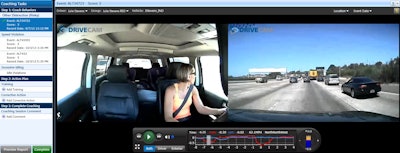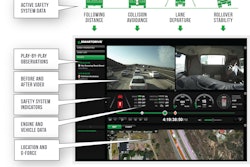
Last August, a C.R. England truck was sideswiped at an intersection. A few hours later, Marcus Edwards, the company’s director of corporate safety, saw the event unfold from his desk. Immediately, he knew the driver was innocent. The truck remained stopped until the traffic light turned green.
C.R. England, the nation’s largest refrigerated carrier (#14 on the CCJ Top 250), is currently testing two video-based driver risk management (DRM) systems.
Cargo Transporters (#214 on the CCJ Top 250) has had similar experiences using a video-based DRM system. Last winter, a driver was on a two-lane road near the company’s headquarters in Claremont, N.C. While rounding a corner, a passenger car drifted into his lane coming from the opposite direction.
Instinctively, the truck driver moved over to the shoulder. The car continued on its deadly path but only clipped the truck’s bumper. The video showed the truck driver had avoided a head-on collision by swerving off the road and overturning his rig.
“The car driver told the state trooper at the scene that he was reaching for his cell phone,” says John Pope, chairman of Cargo Transporters. Even without this confession, Cargo Transporters had convincing evidence.
The number of truck crashes has been trending down for a number of years. The cost, on the other hand, is rising sharply. On average, a single fatality costs $7 million. Big judgments of $10 million and more are common. Meanwhile, the average payout per injury is $321,000 and property damage $13,000, according to the Federal Motor Carrier Safety Administration.










